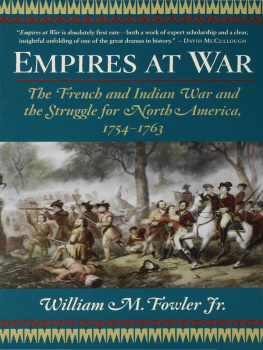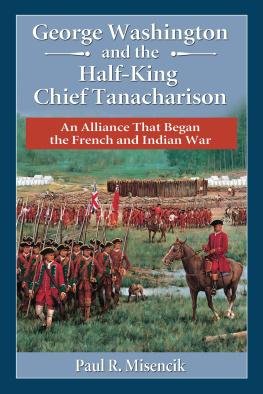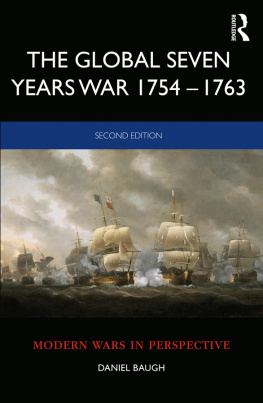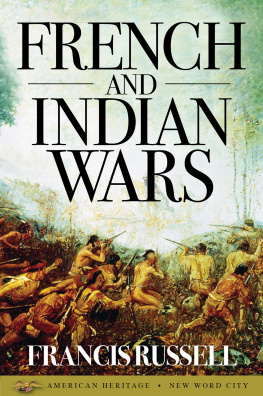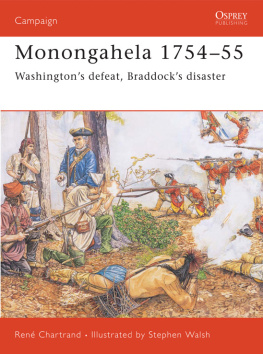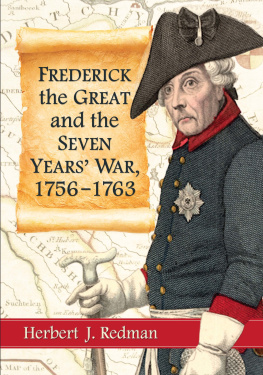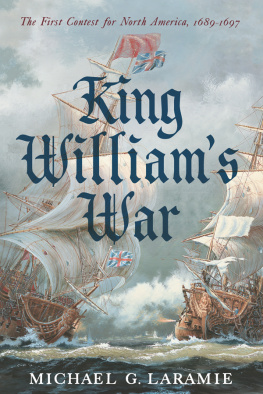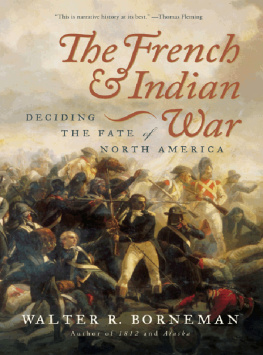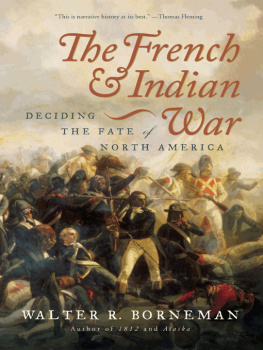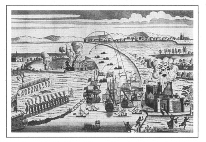Copyright 2005 by William M. Fowler Jr.
All rights reserved. No part of this book may be reproduced or transmitted in any form or by any means, electronic or mechanical, including photocopying, recording, or by any information storage and retrieval system, without permission in writing from the Publisher.
First published in the United States of America in 2005 by Walker Publishing Company, Inc.
This paperback edition published by Walker in 2006
Distributed to the trade by Holtzbrinck Publishers.
For information about permission to reproduce selections from this book, write to Permissions, Walker & Company, 104 Fifth Avenue, New York, New York 10011.
Art Credits:
(neg. 604), (neg. 4482), (neg. 83497), (neg. 10597), (neg. 27665), (neg. 11235), (neg. 41109), (neg. 96944), (neg. 3916), (neg. 34215), (neg. 100619), (neg. 21457), (neg. 18752), and (neg. 5805) National Archives Canada.
Massachusetts Historical Society. Library of Congress, Maps Division. McCord Museum of Canadian History. William L. Clements Library, University of Michigan. John Carter Brown Library, Brown University. Washington and Lee University (Washington/Custis/Lee Collection). National Portrait Gallery, London. National Maritime Museum, Greenwich.
The Library of Congress has cataloged the hardcover edition as follows:
Fowler, William M., 1944
Empires at war : the French and Indian War and the struggle for North America, 1754-1763 / William M. Fowler, Jr.
p. cm.
Includes bibliographical references.
eISBN: 978-0-802-71935-5
1. United StatesHistoryFrench and Indian War, 1754-1763. I. Title.
E199.F78 2005
973.2'6dc22
2004043064
Book design by RLF Design
Book composition by Coghill Composition Company
Visit Walker & Company's Web site at www.walkerbooks.com
Printed in the United States of America by Quebecor World Fairfield
10 9 8 7 6 5 4 3 2
To my father
a member of the
"Greatest Generation"
Contents
This book began with travel. For many years each summer I have had the opportunity to cruise the shores of eastern Canada, the Saint Lawrence River, and the Great Lakes. It has also been my pleasure in the winter season to visit often in Ottawa. Those trips sparked and then sustained my interest in our northern neighbor and particularly its early connections with New England. That relationship, of course, was often violent, as three peoplesNative Americans, French, and Englishcompeted for land, trade, and influence along the marchlands of North America. In the summer of 1754 an incident in the valley of the Ohio River piled fuel on these smoldering embers and ignited the worlds first world war. That war is the focus of this work.
In the course of my travels I talked with many historic-site interpreters, who cheerfully answered my questions. Many of these men and women belong to the staffs of the National Park Service and Parks Canada. Others work for sites held privately. All were invariably helpful. Until 1998 I was a member of the faculty at Northeastern University. To that institution I owe a considerable debt. My colleagues in the Department of History, as well as staff from the Snell Library and university administration, aided my work at every step and created an atmosphere in which scholarship is valued and supported. The same maybe said of the Massachusetts Historical Society, to which I moved in 1998. One of the world's great research libraries, the collections of the MHS are, according to the Harvard Guide to American History, "the most important collections of American manuscripts outside the Library of Congress." While the collections may be second to the Library of Congress, the staff of the society is second to none! Under the able direction of the librarian Peter Drummey, the staff is invariably amiable and professional. Mary Fabiszewski, the society's chief cataloger, was particularly helpful in finding scarce titles for me. Two neighbors of the society, the Boston Public Library and the Boston Athenaeum, were also gracious. I also extend my thanks to the Huntington Library, San Marino, California, for providing copies of materials from the Loudoun Papers.
In Ottawa the staff at the Library and Archives Canada were exceedingly helpful. During my visits to the Library and Archives materials were made available in a cheerful and timely fashion. The staff, particularly those individuals in the photographic department, also responded quickly to my email and phone inquiries. The same high level of service is characteristic of the National Gallery of Canada. I am also grateful for the kind attention I received from Peter Harrington, curator of the Anne S. K. Brown Military Collection at the Brown University Library, and the staffs at the McCord Museum, Montreal, and the National Maritime Museum, Greenwich.
During the course of my work numerous friends and colleagues were generous with their time, advice, and encouragement. Both Nicholas Westbrook and Ian McCulloch were kind enough to offer their comments. I am particularly thankful to David McCullough, who in the gentlest way often asked me, "So how's the book going? " His queries were a tonic to me. I also thank Linda Smith Rhoads, editor of the New England Quarterly, who once again took the time to read and comment. My editor, George Gibson, knew when to stay distant and when to draw close. His keen comments and insight were invaluable, and they were delivered in the most amiable fashion. I also recognize the fine reading given to the manuscript by Arthur Goldwag and the superb copyediting of Vicki Haire. Special thanks go to my dear friend Martin, who for many years offered me his hospitality during my many visits to Ottawa.
Finally, I thank my wife, Marilyn, and our children, Alison and Nathaniel, who patiently endured my absence while writing this book.
Abercromby, James (170681), succeeded Lord Loudoun as commander in chief in North America and was defeated at Ticonderoga (1758).
Amherst, Jeffrey (171797), was third British commander in chief in North America following Edward Braddock and John Campbell (Lord Loudoun).
Amherst, William (178281), the younger brother of Jeffrey Amherst, retook Newfoundland from the French in 1762.
Anson, George (16971762), was first lord of the admiralty.
Atkins, Edmund (1697-1761), was superintendent of Indian affairs for the Southern Department.
Attakullakulla, Little Carpenter (1705-80), was a Cherokee chief and British ally known for his skills at diplomacy.
Barr, Isaac (17261802), an officer who served with Wolfe, later became an outspoken opponent of taxing America.

